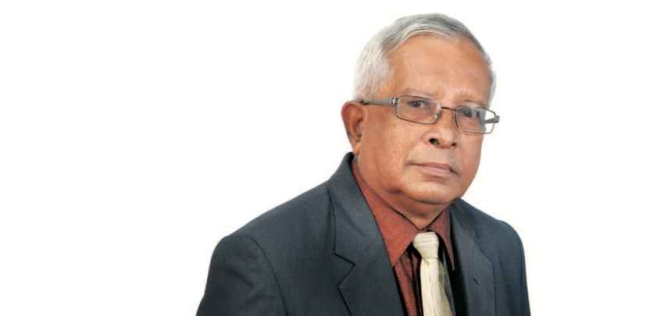
HRD seeks to constantly maintain maximum efficiency and effectiveness by examining employee functions in their jobs. To increase the performance of a company, HRD focuses on elements such as staff satisfaction, compensation, and incentives to keep up morale in order to achieve the highest possible performance from the employees HRD covers the role of recruitment, job analysis, performance appraisals, and skill inventorying to gain a competitive advantage. The extracted data during HR Planning are required to keep track of the human capital functioning within the company. While the task of compiling accurate data may be difficult, advances in technology play a major role in today’s HR function to help automate the work and make it easier.
In the digital era, current human resource planning is leaning toward a more machine-based system. The benefits of cutting-edge technology can help HR planners greatly increase the efficiency and their ability to forecast future needs and wants. The future of HR lies in data analytics that compiles all the information on employees, including their upbringing, experience, performance, and skill sets and monitors them via a computerised interface. Human resource planning is creating strategies around machine run data. The resulting benefit makes artificial intelligence (AI) an important asset that would decrease the time spent on recruitment and increasing its effectiveness while also providing applicants with a fair assessment.
It is with a great sense of admiration mixed up with a dash of amazement, that I scan the current HRD scenario to witness the giant strides made in this field. Yet amongst the glamour and glitter orchestrated by many organisations, which apparently looks like the tip of the iceberg, perhaps it could be my imagination at this late stage of life, I notice a sense of undue stress and dissatisfaction among the staff at all levels in most companies I happen to visit during my consultancies. It makes me to wonder whether we are better off nowadays and motivates me to recollect the scenarios that existed half a century ago during my formative years
As the well quoted words of Mark Antony in Julius Caesar of Shakespeare:
Friends, Romans, countrymen, lend me your ears;
I come to bury Caesar, not to praise him,
My aim is not to glorify the so-called good old days, but to glimpse at some of the best practices used which were appropriate in those bygone days, and some which in my opinion can still be practically valid.

When I faced the first interview at the Bata Shoe Company of Ceylon Ltd in 1969, the very first question I was asked by the Personnel Manager was why I have stipulated a low salary. You should never underestimate yourself. I was reminded. By that time, I had a little over one years’ experience in one of the footwear companies and I was studying part-time for LIRI ( UK ). We joined as trainees under the Management Development Personnel (MDP), and the very first document we were given was a printed leaflet about learning principles (which I still have filed). It started with the famous ancient Chinese quote:
Give a Man a Fish, and You Feed Him for a Day. Teach a Man to Fish, and You Feed Him for a Lifetime.
The type of training was truly hands-on. Whichever functional area we were selected, be it Production, Technical, Purchasing, Marketing, HR or Engineering, we were assigned to the sales outlets and showrooms for one week to familiarize with customer requirements and to learn the shoe sizes by practice. It was a very practical way of understanding customer perception on which there are a multitude of techniques available these days. In the technical and production area which I preferred, our training programme included actual learning and practice of milling, the internal mixer, and other rubber processing machinery, including moulding , and later, working alongside the operators ( sitting next to Nellie) , in the footwear conveyors. The injection molding techniques were not available in the Sri Lanka factory by that time. This reminds me of the Genba (real place) concept, of the Japanese which I happen to familiarize, much later in life. The “Baptism by Fire” became a guiding light in shaping my career in the rubber industry. We were also given a small ring bound hardcover pocket notebook, where we were compelled to list down the daily tasks, mark the ones accomplished and carry forward the balance to the next day. Every operational division used a “Workshop Balance Sheet '' which gave a record of hourly production against target, and the reasons for any shortfall had to be corrected promptly. It was also required to show the material and machine availability for the following day’s production requirement and get the signature of the responsible persons. This was a simple yet effective way of assigning responsibility and accountability. Internal Memos were delivered by hand and the signature of the recipient was taken on the original, and in retrospect, I think that this was a more reliable mode than the emails when considering accountability.
It was an era where there no ICT, and other paraphernalia, computers, electronic calculators, smartphones and APPs that a young person has at his disposal The fastest mode of communication was the Telex, and photocopier (Xerox) and the Facsimile, were yet to see the dawn of the day. We were given a large record book similar to a modern wedding photographic album, which was called the Wellington Book, (named after the Duke of Wellington, of the Battle of Waterloo fame), to record all our learning experiences, which the Personnel Manager discussed with us during the weekly counselling sessions. At a time when the now famous ISO 9001 Procedures and SOPs were not heard of, the organization used standard procedures, and other working documents and formats, including standard formula cards, in its worldwide network of about 110 factories.
We were encouraged to learn from direct observations which include cleanliness and housekeeping also, reminiscent of the power of observations of Sherlock Holmes, which generally ended up with the comment “elementary my dear Watson”. Although the systemized data analysis and virtual access were m not available, my opinion is that the power of observation and hands-on experience enhances the brain functioning, which even some of the modern research has shown to be diminishing with the automation and Artificial Intelligence.
The importance of Tacit (implicit) knowledge or knowing how was given a prominent position during those days, while Explicit knowledge (knowing what), codified and digitalized, plays a more important role nowadays. A parallel from the field of medical examination seems suitable to cite at this juncture. Competent Ayurvedic physicians are capable of diagnosing many physical illnesses, acutely by feeling the pulse of the patient (which even some Western practitioners used to do in our young days), while modern specialists are heavily dependent on tests and techniques and numbers, and yet the general status of physical wellbeing of the people is no better.
Another important aspect of HRD during those days was providing opportunities for representing the company in regional conferences, where we had to present and discuss the technical and other productivity improvements with our counterparts. The only equipment available were the slide projectors and the Flip Charts, which made it a challenging task. It was also an opportunity to interact with people of different nationalities and cultures, which the current tele -conferences and the most recent webinars cannot fulfil adequately. Evaluation of such training was initially done by way of a presentation to the Senior Management and a component of the annual increments was determined by the productive activities one completed after the training, apparently was “no free lunch”.
Some of the leading rubber and chemical raw material suppliers of the yesteryears, Bayer, Monsanto, Rheine Chemie, Polysar,ICI and Vanderbilt , to name few played a leading role in improving the knowledge base of the personnel engaged in the industry. Their Handbooks, and Technical Notes were invaluable treasures. The three-week residential Customer Technical Training Programme of Bayer India was in the Annual HR Agendas during those daysI had the fortune of participating in this programme in 1978, and it was very efficiently handled by Ms R.R Pandit ( diseased ) , SN Chakravarthi.
During my subsequent career progress with companies in Nairobi, Kenya and Sri Lanka, I have made an endeavor to use some of these proven methods to develop the technical and production staff in the companies I have worked. One of the effective methods that can be cited is the compulsory training in Banbury Mixing given to trainees from the universities in Sri Lanka during their In-Plant Training and it gives me a great satisfaction to see that most of them have done very well in their careers and are holding high positions in the industry. Working in an environment with carbon black is a useful learning method, which will be helpful in our professional as well as personal lives.
Not all human resources managers are created equal. In fact, they come from a variety of backgrounds on their way to higher-level HR positions. Still, despite these different paths, many still share basic HR manager responsibilities. The most vital aspect is the importance of the personal touch and the “people centeredness” with respect to the interphases, which the modern techniques seem to be fast obliterating
The vital message I would wish to the industry is the dire importance of the 3Bs, namely, going back to the base at whatever technology level we are engaged, reinforce the base and sustain the base.
Vaculug Acquires Scotland's Tyrefair To Drive Northern Expansion
- By TT News
- September 11, 2025

Vaculug, Europe’s largest independent retreader producing high-quality OTR and truck retread tyres for fleets across the UK and Europe, has expanded its UK presence by acquiring Tyrefair in Kinross, Scotland.
This strategic acquisition extends the company's award-winning service further north, ensuring Scottish customers receive the same high-quality OTR and truck retread tyres Vaculug has supplied for 75 years. Since the purchase, the Kinross location has already grown by 25 percent, with an ambitious target to double its business within a year and then double it again.
This move is a key part of Vaculug's 2026 growth strategy, focused on strategic acquisitions that enable better, faster and more sustainable customer service. The acquisition reinforces Vaculug’s long-standing environmental mission, marking a new chapter of sustainable growth with a strengthened Scottish operation.
- Nokian Tyres
- American Tyre Distributors
- All-Season Tyres
- All-Weather Tyres
- All-Terrain Tyres
- Winter Tyres
Nokian Tyres Partners With American Tire Distributors
- By TT News
- September 11, 2025
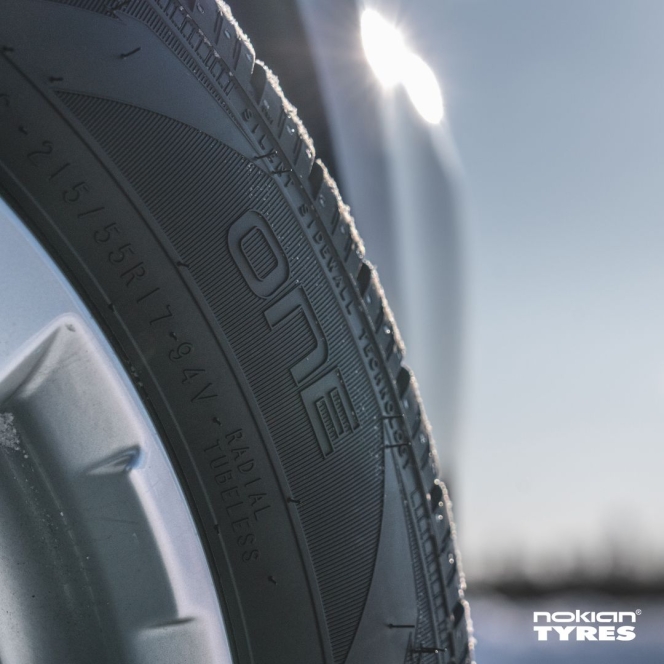
Nokian Tyres is expanding its US presence through a new nationwide partnership with American Tire Distributors (ATD). This agreement provides Nokian access to ATD’s vast network of over 110 distribution centres, serving roughly 80,000 customers.
The collaboration will efficiently supply tyre shops with Nokian’s complete product lineup, enabling dealers to broaden their inventory. Both companies bring 90 years of experience and a shared dedication to innovation, safety and sustainability. This partnership will offer drivers more choices, supported by Nokian’s award-winning Tennessee factory and ATD’s technology-driven logistics.
This enhanced distribution capability ensures that consumers will have greater access to a full spectrum of high-performance tyres, meeting diverse driving needs and conditions. The alliance strengthens both brands' market positions by combining premium products with an unparalleled delivery system, ultimately improving service for dealers and drivers alike across the country.
Chris Ostrander, SVP, North America, Nokian Tyres, said, “The partnership with ATD enables us to reach more tyre shops and more drivers than ever before. ATD’s robust distribution network, customer service and responsiveness strengthen our agility to serve both new and existing customers.”
- USTMA
- U.S. Tire Manufacturers Association
- Tire Recycling Foundation
- Tyre Circularity
- End-Of-Life Tyres
- Tyre Industry Webinars
USTMA Announces Webinar Series To Advance Circular Economy For ELTs
- By TT News
- September 11, 2025
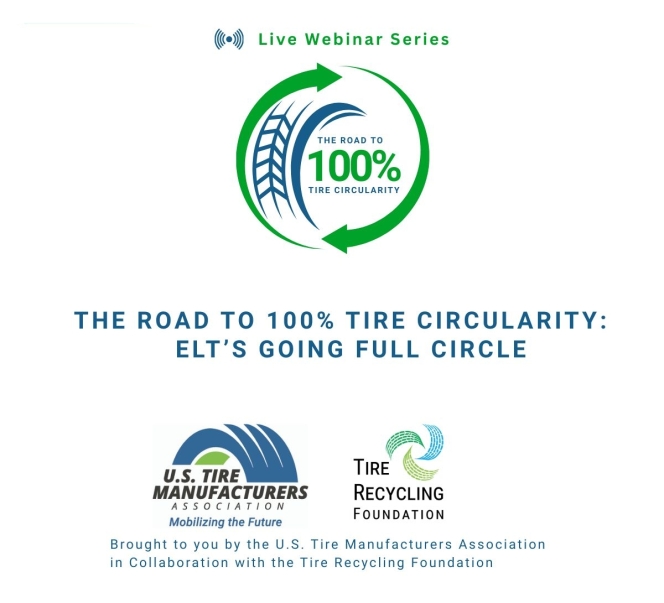
The U.S. Tire Manufacturers Association (USTMA) has announced a new webinar series designed to advance the circular economy for end-of-life tyres (ELTs) in collaboration with the Tire Recycling Foundation. Titled ‘The Road to 100% Tire Circularity: ELTs Going Full Circle’, the initiative aims to foster the development of scalable and profitable markets for recycled tyres. The series will launch in September 2025 and continue through February 2026.
Hosted by John Sheerin, USTMA’s Senior Director of ELT Programs, each session will convene industry experts, recyclers and state policymakers. Their discussions will focus on the latest research and real-world applications that transform waste tyres into valuable resources, thereby diverting them from landfills and generating environmental, industrial and economic benefits.
The programme will explore three of the most promising markets for end-of-life tyres. It begins on 23 September 2025 with a session on tyre-derived aggregate (TDA), examining its use in civil engineering projects like structural fill and stormwater management. A subsequent webinar on 30 October 2025 will cover the growing market for moulded and extruded products made from recycled rubber.
A significant portion of the series will be dedicated to rubber-modified asphalt (RMA), a material known for creating longer-lasting and more sustainable roadways. An introductory session on 20 November 2025 will review the overall performance and benefits of RMA. This will be followed by two regional deep dives: one on 14 January 2026, focusing on practical applications in Midwestern states like Michigan and Ohio, and another on 28 January 2026, exploring its adoption in Southern states including Kentucky and Georgia. The series will culminate on 24 February 2026 with a capstone session providing a comprehensive overview of grant and funding opportunities available to support the growth of these ELT markets.
This initiative addresses a critical need. While tyres are one of the most recycled products in US, and stockpiles have been reduced by 94 percent over the past three decades, the generation of end-of-life tyres continues to outpace their consumption in recycling markets. The webinar series is presented as a strategic pathway to bridge this gap by promoting innovative and sustainable end-use applications.
Those interested in shaping the future of tyre management are encouraged to register for any or all of the webinars through the USTMA website. Attendees will receive a resource kit after each session to help facilitate further discussion and action.
Anne Forristall Luke, President & CEO, USTMA, said, “We view these webinars as a crucial opportunity to connect key leaders across the country and show them that sustainability and economic growth go hand-in-hand. By showcasing proven applications and providing the tools to act, we can collectively turn ELTs from a waste challenge into an economic engine.”
Sheerin said, “As we look to expand ELT markets and unlock the full environmental and economic potential of end-of-life tyres, collaboration is essential. And no one can do it alone. State DOTs, regulators, recyclers and manufacturers must work together to help grow ELT markets through targeted investment, supportive policy and continued research.”
Continental Advances Sustainable Tyre Production With Used Cooking Oil
- By TT News
- September 10, 2025
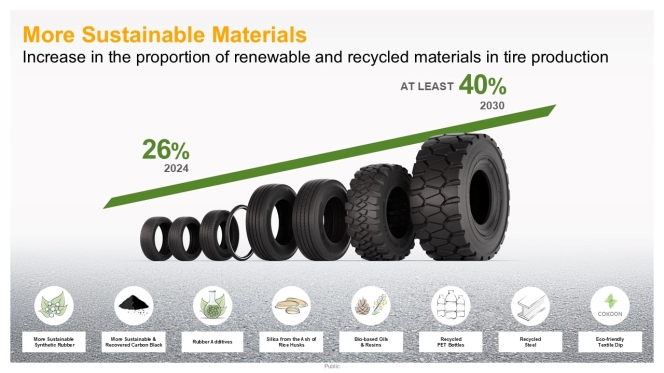
Continental is accelerating its commitment to sustainability by integrating a growing proportion of renewable and recycled materials into its tyre manufacturing. The company’s current average of 26 percent is projected to rise by several percentage points within the year, with a strategic goal of reaching at least 40 percent by 2030. A central pillar of this initiative involves rethinking the sourcing of two essential components: rubber and resins.
Rubber is a fundamental material, constituting up to 40 percent of a modern high-performance tyre’s weight. Continental utilises a complex blend of up to 100 different raw materials, engineered into numerous customised rubber compounds for each tyre. The portfolio includes both natural rubber, prized for its durability and resistance in critical areas like truck treads, and synthetic rubber, which enhances braking performance and rolling resistance in passenger vehicles. The company is now progressively replacing conventional fossil-based synthetic rubber with more sustainable alternatives. This includes synthetic rubber derived from used cooking oil and pyrolysis oil from end-of-life tyres, sourced from certified partners like Synthos and TotalEnergies Cray Valley.
Complementing rubber, specialised resins are vital for optimising a tyre’s performance characteristics. These resins help fine-tune the balance between elasticity and resilience, which directly improves wet grip, abrasion resistance and energy efficiency. Continental is incorporating circular resins, also certified under the ISCC PLUS standard, which originate from renewable feedstocks like vegetable oil or used cooking oil.
Furthermore, the company is adopting sustainable alternatives for key additives. For instance, it is the first tyre manufacturer to use a certified biocircular version of the antioxidant TMQ. Produced from waste materials such as recycled cooking oil, this additive achieves a carbon footprint over 30 percent lower than its conventional counterpart.
To systematically track and scale the use of these sustainable materials, Continental employs a mass balance approach. This method allows fossil-based, renewable and recycled feedstocks to be mixed in production while accurately attributing the sustainable content to the final product. This system provides verifiable documentation and enables Continental to continuously increase its use of certified materials across its entire tyre range.
Jorge Almeida, Head of Sustainability at Continental Tires, said, “We’re closing the loop: Continental is ramping up its commitment to a circular economy and mapping out its path for the future. Innovative solutions enable us to use more sustainable raw materials, such as synthetic rubber made from used cooking oil or resins based on certified renewable feedstocks originally derived from vegetable oil.”
Matthias Haufe, Head of Material Development and Industrialisation at Continental Tires, said, “The mass balance approach enables us to efficiently manage the complexity of the raw materials portfolio and track how these raw materials are used at multiple production sites in a wide range of markets. In this way, we can steadily increase the share of renewable and recycled materials in our tyre production – and transparently document the progress we make.”



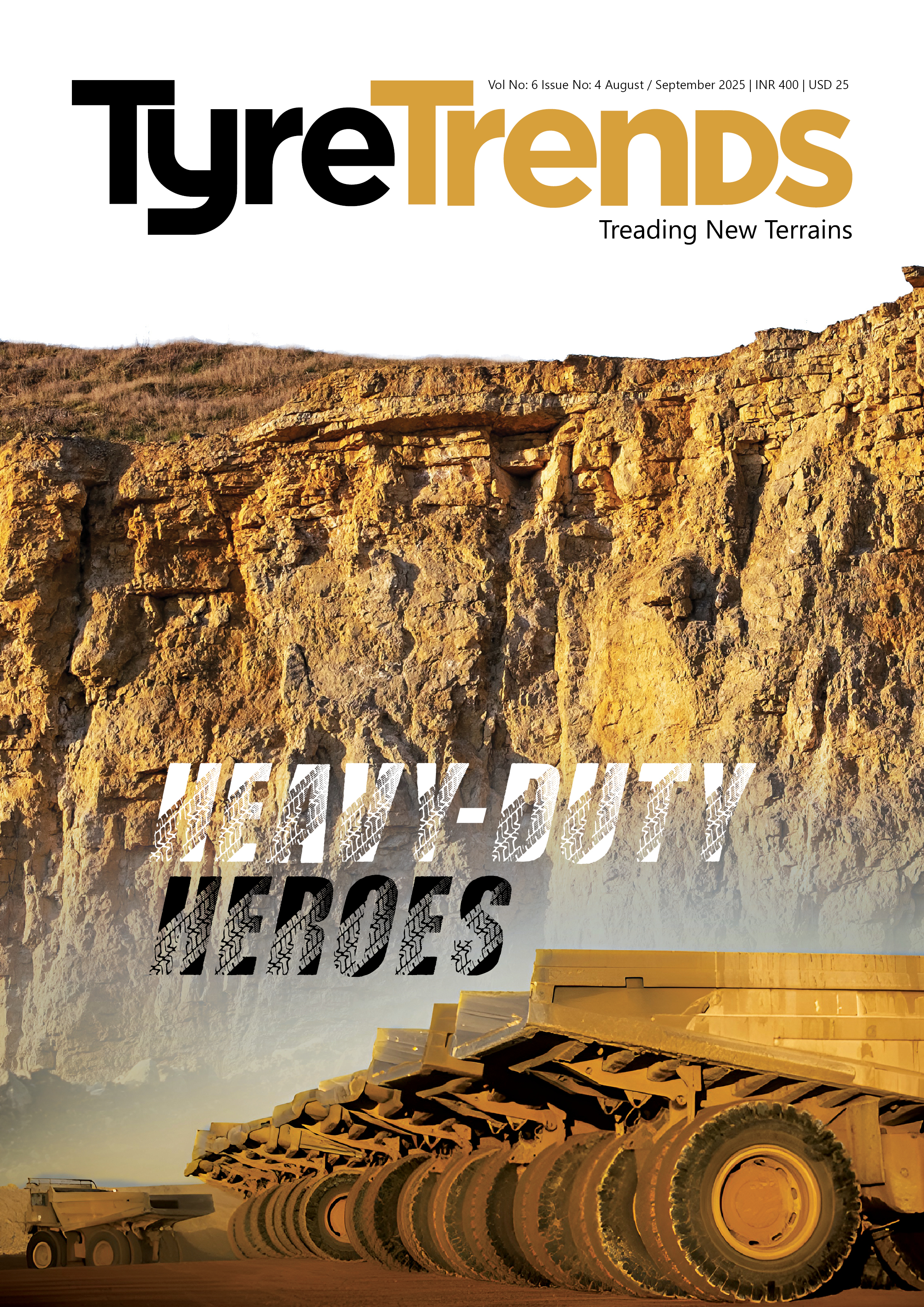
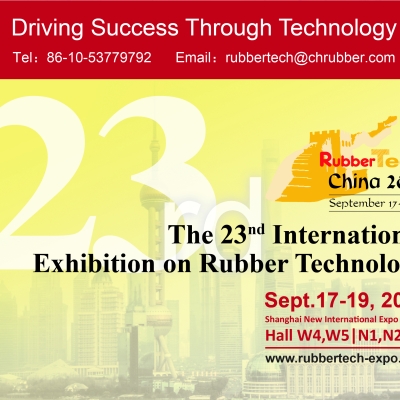
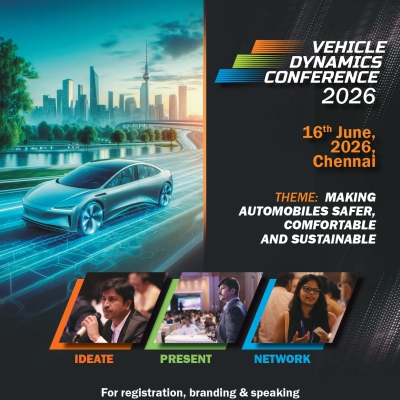

Comments (0)
ADD COMMENT